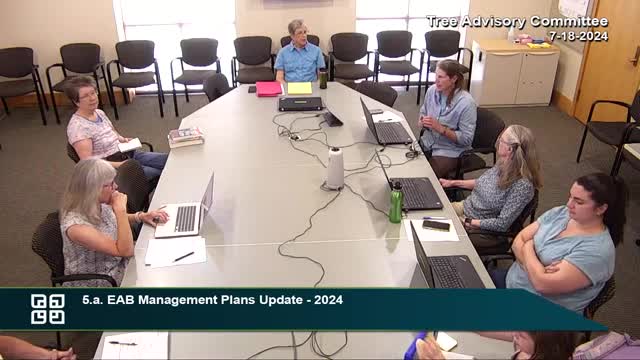City battles emerald ash borer crisis with aggressive tree removal
July 19, 2024 | Fitchburg, Dane County, Wisconsin

This article was created by AI summarizing key points discussed. AI makes mistakes, so for full details and context, please refer to the video of the full meeting. Please report any errors so we can fix them. Report an error »

In a recent government meeting, officials discussed the ongoing management of ash trees affected by the Emerald Ash Borer (EAB), emphasizing a two-pronged approach of inspections, treatment, and removal. The municipality treats approximately 100 trees annually, focusing on those graded as \"good\" or \"fair,\" while removing those deemed \"poor\" or \"remove now.\"
The discussion highlighted the aggressive removal strategy, with officials noting that no hazardous situations have arisen from untreated public ash trees. The EAB is no longer federally or state-regulated, meaning there are no quarantines in place, and officials acknowledged that the pest will remain a persistent issue, requiring ongoing treatment efforts.
Financial constraints were a significant concern, as the municipality has not received additional resources beyond the budget allocated for chemical treatments. The cost of treating trees is substantial, with one liter of the necessary chemical costing $500 and treating only a limited number of trees. The treatment process involves injecting chemicals into the trees, which can stress them further, especially during drought conditions that exacerbate infestations.
Officials reported that they have marked around 20 trees for removal this year, which represents about 15% of the municipality's ash tree population. The conversation also touched on the challenges posed by other pests, such as the sponge moth, which have emerged as a result of the focus on EAB management.
The meeting concluded with a recognition of the need for a balanced approach to tree management, considering both the ecological impact and community attachment to urban trees. The municipality continues to navigate the complexities of pest management while striving to maintain the health of its urban forest.
The discussion highlighted the aggressive removal strategy, with officials noting that no hazardous situations have arisen from untreated public ash trees. The EAB is no longer federally or state-regulated, meaning there are no quarantines in place, and officials acknowledged that the pest will remain a persistent issue, requiring ongoing treatment efforts.
Financial constraints were a significant concern, as the municipality has not received additional resources beyond the budget allocated for chemical treatments. The cost of treating trees is substantial, with one liter of the necessary chemical costing $500 and treating only a limited number of trees. The treatment process involves injecting chemicals into the trees, which can stress them further, especially during drought conditions that exacerbate infestations.
Officials reported that they have marked around 20 trees for removal this year, which represents about 15% of the municipality's ash tree population. The conversation also touched on the challenges posed by other pests, such as the sponge moth, which have emerged as a result of the focus on EAB management.
The meeting concluded with a recognition of the need for a balanced approach to tree management, considering both the ecological impact and community attachment to urban trees. The municipality continues to navigate the complexities of pest management while striving to maintain the health of its urban forest.
View full meeting
This article is based on a recent meeting—watch the full video and explore the complete transcript for deeper insights into the discussion.
View full meeting
